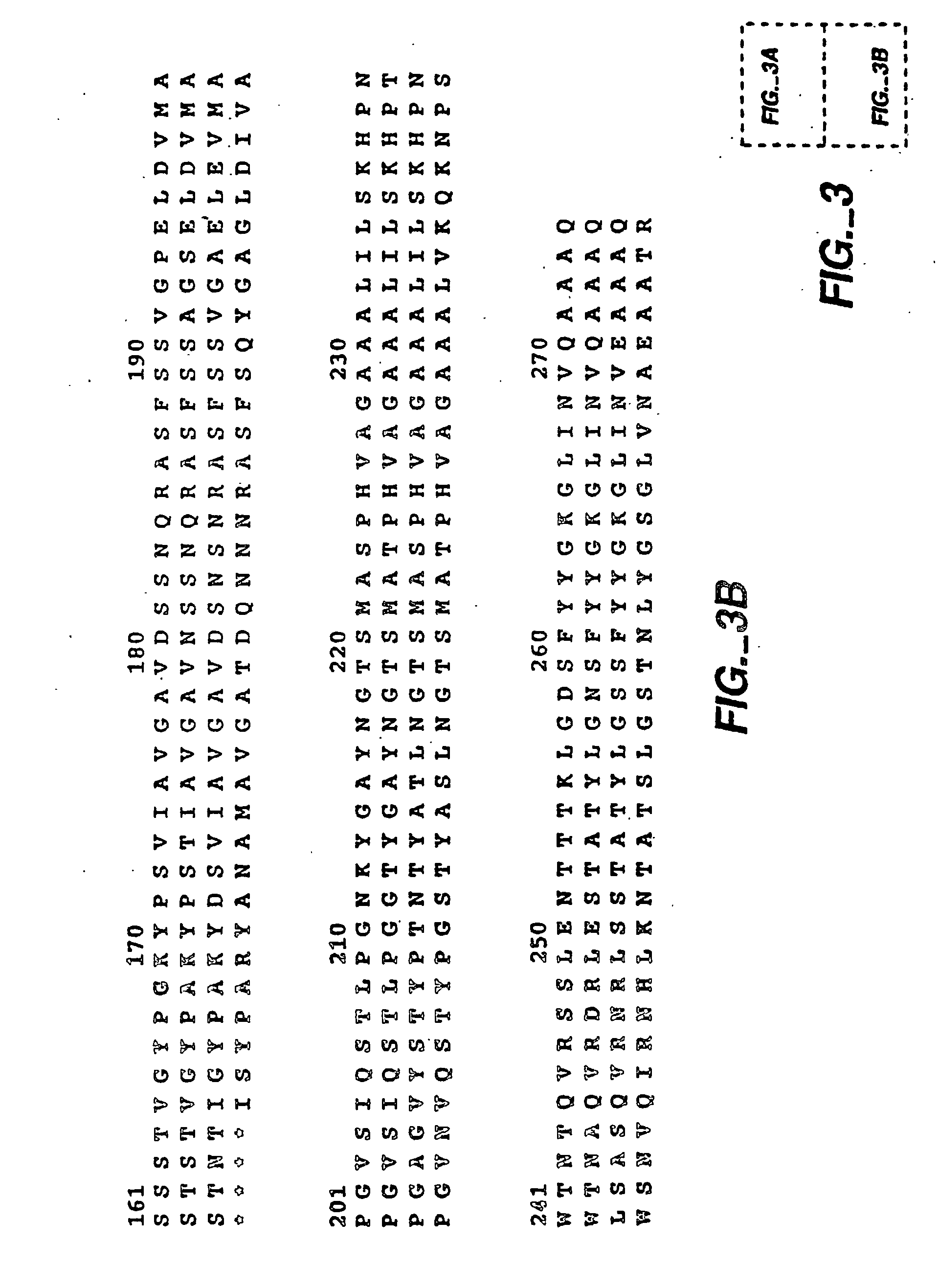Methods for site-directed mutagenesis and targeted randomization
a site-directed mutagenesis and randomization technology, applied in the field of site-directed mutagenesis and targeted randomization, can solve the problems of difficult modification and/or improvement of expressed proteins, ineffective method use of dna libraries, and long time-consuming protein engineering/development time, etc., to achieve the effect of effectively transforming bacillus
- Summary
- Abstract
- Description
- Claims
- Application Information
AI Technical Summary
Benefits of technology
Problems solved by technology
Method used
Image
Examples
example 1
Site-Directed Mutagenesis with Forward and Reverse 5′ Phosphorylated Primers
[0090] In this Example, various experiments conducted for direct Bacillus transformation are described.
[0091] A large number of protease variants were produced and purified using methods well known in the art. All mutations were made in Bacillus lentus GG36 subtilisin protease (FIG. 3A-B, SEQ ID NO.:1 (U.S. Pat. No. 6,482,628; International Publication WO 99 / 20769, published Apr. 29, 1999). Some of the variants were made as described in International Publication WO 03 / 062381, filed Jan. 16, 2003, and International Publication WO 03 / 06280, filed Jan. 16, 2003.
[0092] This example was to incorporate random mutations at a specific GG36 codon. The GG36 gene was located in the pVS08 B.subtilis expression vector.
example 1a
Construction of Circular DNA (FIG. 1)
[0093] To construct the GG36 site saturated libraries and site specific variants, three PCR reactions were performed: two PCR's to introduce the mutated codon of interest in GG36 and a fusion PCR to construct the expression vector including the desired mutation(s).
[0094] The GG36 codons of interest were numbered according to the BPN′ numbering
For the Site Saturated Library Construction:
[0095] The method of mutagenesis was based on the region-specific mutation approach in which the creation of all possible mutations at a time in a specific DNA codon was performed using a forward and reversed complimentary oligonucleotide primer set with a length of 30 up to 40nucleotides enclosing a specific designed triple DNA sequence NNS ((A,C,T or G), (A,C,T or G), (C or G)) that corresponded with the sequence of the codon to be mutated and guaranteed randomly incorporation of nucleotides at that codon.
For the Site Specific Variant Construction
[0096] T...
example 1b
Transformation of Bacillus subtilis
[0112] Ligation mixtures were transformed to Bacillus subtilis BG2864 (Naki et al., 1998) using the method of Anagnostopoulos and Spizizen (1961) and selected for chloramphenicol resistance and protease activity.
Materials
2× Spizizen Medium
per liter:
[0113] 28 g K2HPO4
[0114] 12 g KH2PO4
[0115] 4 g (NH4)2SO4
[0116] 2 g tri-Sodium citrate (C6H5Na3O7)
[0117] 0.4 g MgSO4.7H2O
[0118] pH 7.0-7.4
2× Spizizen-Plus Medium
[0119] Added 1 ml 50% Glucose and 100 μl 20% Bacto® Casamino acids solution (Difco Cat. no. 0230-15) to 100 ml 2× Spizizen medium. [0120] HI-agar [0121] Difco Bacto® Heart infusion agar (Cat. no. 0044-17) [0122] Suspended 40 g / L in deionized water. [0123] Autoclaved at 121° C. for 15 minutes
Minimal Medium Agar:
Solution A: per liter
[0124] 10 g K2HPO4
[0125] 6 g KH2PO4
[0126] 2 g (N4)2SO4
[0127] 1 g tri-Sodium citrate (C6H5Na3O7.2H2O)
[0128] 0.2 g MgSO4.7H2O
[0129] 250 ug MnSO4.4H2O
[0130] 2 g L-Glutamic acid
Solution B: per li...
PUM
| Property | Measurement | Unit |
|---|---|---|
| pH | aaaaa | aaaaa |
| temperature | aaaaa | aaaaa |
| concentrations | aaaaa | aaaaa |
Abstract
Description
Claims
Application Information
 Login to View More
Login to View More - R&D
- Intellectual Property
- Life Sciences
- Materials
- Tech Scout
- Unparalleled Data Quality
- Higher Quality Content
- 60% Fewer Hallucinations
Browse by: Latest US Patents, China's latest patents, Technical Efficacy Thesaurus, Application Domain, Technology Topic, Popular Technical Reports.
© 2025 PatSnap. All rights reserved.Legal|Privacy policy|Modern Slavery Act Transparency Statement|Sitemap|About US| Contact US: help@patsnap.com



